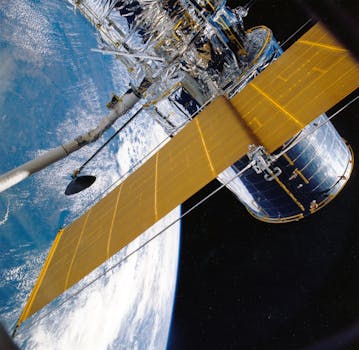
Revolutionizing Connectivity: The Latest Breakthroughs in Satellite Telecommunications
Revolutionizing Connectivity: The Latest Breakthroughs in Satellite Telecommunications are changing the face of modern communication. The latest advancements in satellite telecommunications are transforming the way we connect and communicate, with innovations in satellite technology, 5G integration, and more. In this article, we will delve into the latest breakthroughs in satellite telecommunications and explore how they are revolutionizing connectivity.
Satellite telecommunications have come a long way since the launch of the first commercial satellite, Intelsat 1, in 1965. Today, satellite technology plays a vital role in global communication, providing connectivity to remote and underserved areas, supporting critical infrastructure, and enabling global communication networks. The latest breakthroughs in satellite telecommunications are focused on increasing bandwidth, reducing latency, and improving the overall quality of service.
One of the significant advancements in satellite telecommunications is the development of high-throughput satellites (HTS). HTS satellites are designed to provide high-speed broadband services, with capacities of up to 1 Tbps. These satellites use advanced technologies such as phased arrays and digital signal processing to achieve high gains and improve spectral efficiency. HTS satellites are being used to provide broadband services to consumers, businesses, and governments, and are playing a critical role in bridging the digital divide.
5G Integration and Satellite Telecommunications
The integration of 5G technology with satellite telecommunications is another significant breakthrough. 5G networks require high-speed, low-latency connectivity to function effectively, and satellite technology can provide the necessary backhaul connectivity. Satellite-based 5G networks can provide coverage to remote and underserved areas, where traditional terrestrial networks may not be available. The use of satellite technology can also provide redundancy and backup connectivity in case of network outages or disasters.
In addition to HTS satellites and 5G integration, other breakthroughs in satellite telecommunications include the development of nano-satellites, satellite-based Internet of Things (IoT) services, and advanced propulsion systems. Nano-satellites are small satellites that are designed to provide low-cost, high-speed connectivity to small devices and sensors. Satellite-based IoT services are being used to connect devices and sensors in remote and underserved areas, enabling a wide range of applications such as smart agriculture, smart cities, and industrial automation.
Challenges and Opportunities
Despite the latest breakthroughs in satellite telecommunications, there are still challenges to be addressed. One of the significant challenges is the issue of latency, which can affect the quality of service and user experience. Satellite signals have to travel long distances, which can result in high latency and delay. However, advancements in technology such as the use of low-Earth orbit (LEO) satellites and advanced signal processing techniques are helping to reduce latency and improve the overall quality of service.
Another challenge is the issue of interference, which can affect the quality of service and user experience. Satellite signals can be affected by interference from other satellites, terrestrial networks, and other sources. However, advancements in technology such as the use of advanced signal processing techniques and interference mitigation techniques are helping to reduce interference and improve the overall quality of service.
Conclusion
In conclusion, the latest breakthroughs in satellite telecommunications are revolutionizing connectivity and transforming the way we communicate. With innovations in satellite technology, 5G integration, and more, satellite telecommunications are playing a critical role in bridging the digital divide and providing connectivity to remote and underserved areas. While there are still challenges to be addressed, the opportunities presented by satellite telecommunications are vast and exciting, and are expected to have a significant impact on the future of communication.



